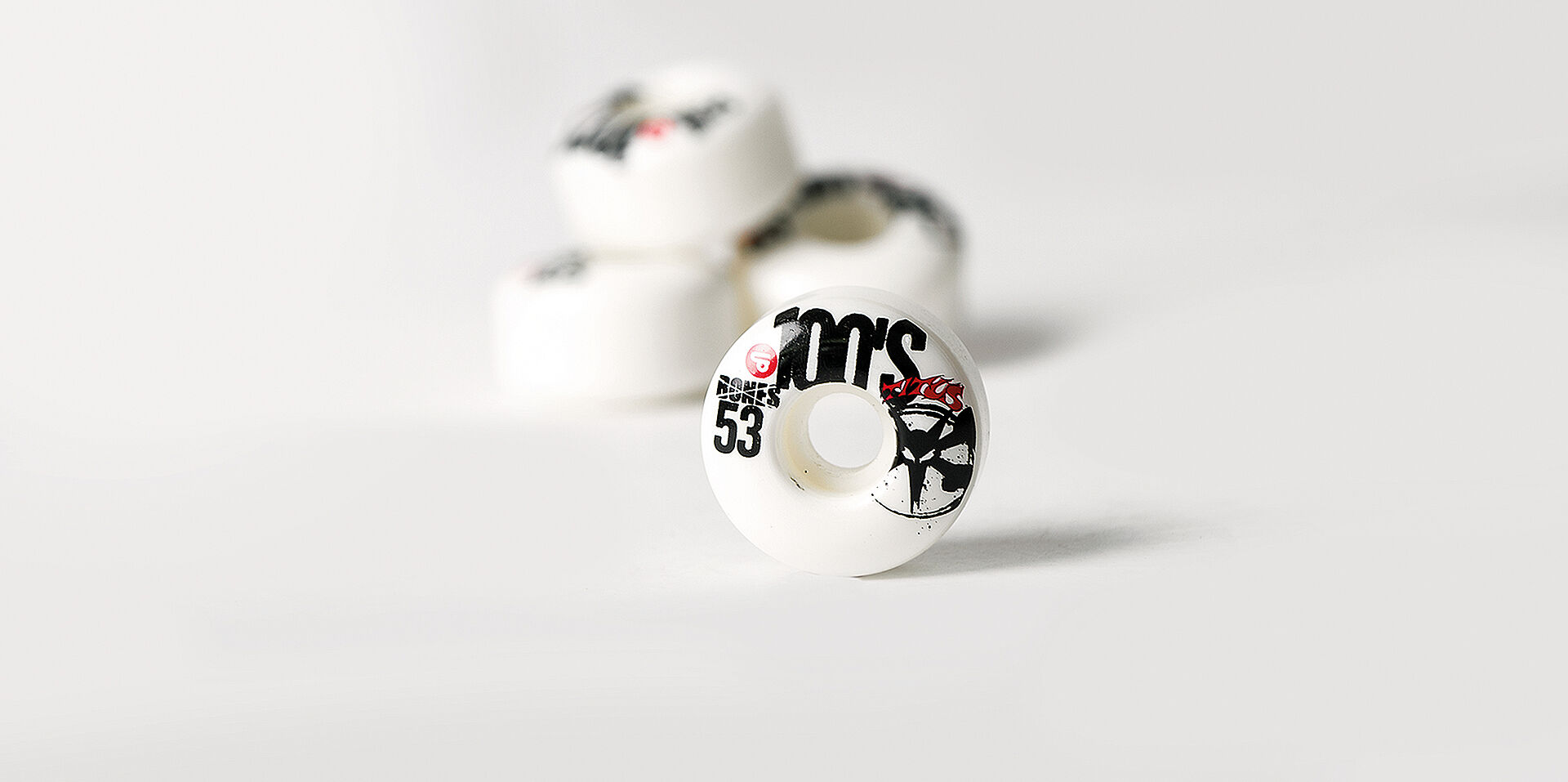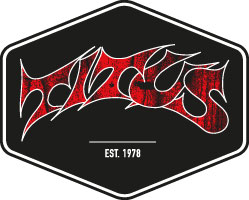The fact that a skateboard consists of 4 primary components - deck, trucks, bearings and wheels - probably doesn't need to be explained to anyone at this point. Nevertheless, there are of course major differences between the individual components and you should pay very close attention to the wheels in particular to ensure that they meet your needs. What shape, size or degree of hardness suits the terrain you mostly ride on? Are you always at home on rough roads, on a ramp or in a skate park? And last but not least, do you ride a skateboard, cruiser or longboard? All in all, there are many questions about skateboard wheels that we want to get to the bottom of in this article.

Skatestuff under the magnifing glass - Skateboard wheels
Not all wheels are the same!
Size:
Nowadays, 90% of skateboard wheels are between 48mm and 60mm in size. In contrast to skateboard decks, whose size is specified in inches, wheels are specified in millimetres. As a general rule, large wheels (55mm-65mm) should be used for high speeds, for example in the halfpipe or in the bowl. If you primarily ride street, wheels between 48mm-55mm are suitable. This size is also ideal for cruiser skateboards, whereas larger versions are used for longboards.
Hardness:
Skateboard wheels are made of the plastic polyurethane whose hardness is measured in “A” durometers. Basically, “the higher the value, the harder the wheel”. The hardest wheels on the market have a value of 101A, soft wheels go down to a hardness of 78A. Skateboarders who feel at home on the street as well as riders who like to transition go for hardnesses between 97A and 101A. Skateboard wheels with a hardness of up to 88A are often used for cruisers, while anything softer is more suitable for longboards. The bottom line is “the softer the wheel, the more comfortably (but also slower) you roll” and conversely “the harder the wheel, the more agile (and faster) you can move your board (especially when sliding)”.
Shape:
While the shape of skateboard wheels has hardly changed over the years or even decades, in 2024 there is a wide variety of skateboard wheel shapes. In the past, a distinction was only made between freestyle skateboard wheels and all other wheels that were suitable for both the street and the ramp. Nowadays, well-known manufacturers such as Spitfire Wheels or Bones Wheels offer up to 10 different shapes, with the Spitfire Tablets, for example, returning to the earlier shape of freestyle wheels. There are also so-called lock-in wheels (for more control on rails) and Powell-Peralta has launched a completely new type of wheel on the market with the Dragon Formula Nano Cubic.
Which wheels for which terrain?
When you use the terms skateboarding and disciplines in the same breath, it sounds a little incompetent at first. Nevertheless, it gets to the heart of the matter when looking for the right wheels. To make things clearer, we differentiate between these three categories at this point:
-Street skating
-Vert and bowl skating
-Cruising and longboarding
Further distinctions must also be made between these three disciplines, especially when it comes to the topic of “Which skateboard wheels are perfect for me”.
Street-Skating on the street:
Are you into technical flip and ledge tricks and do you like jumping steps? Then you should opt for smaller and harder skateboard wheels for asphalt (50mm-56mm diameter, 95A-101A hardness). This allows you to slide in a controlled and even manner and prevents wheelbites on the deck.
If you are riding on particularly rough roads, you can also opt for slightly softer wheels or products such as the Dragon Formula Wheels from Powell-Peralta.
Street-Skating in the park:
Since skate parks logically (should) have perfect ground, you can definitely get by with very hard skateboard wheels (99A-101A). Not only will you be faster, but you will also be able to take sharper turns and “slide in” tricks better! In terms of size, a wheel diameter of 50mm-56mm is also a good choice.
Vert- and Miniramp-Skating (on wood)
Skateboard wheels with a high degree of hardness are also used on wooden surfaces, although some riders prefer slightly softer skateboard wheels. Wheels from 101A up to a softness of around 97A are suitable. Especially on particularly slippery wooden surfaces, slightly softer wheels give you more grip and control.
Cruising and Longboarding
Soft skateboard wheels are generally used for cruiser boards or longboards. For cruiser skateboard wheels, most skateboarders prefer a more “normal” wheel shape and a size between 54mm-60mm. The degree of hardness should be between 95A and 78A. Longboard wheels are generally much wider than regular skateboard wheels. The size is also usually above 60mm and the degree of hardness below 90A. In general, it can be said that longboard wheels are only suitable for use under longboards.
Conclusion: The right choice of skateboard wheels
Choosing the right skateboard wheels depends heavily on your personal riding style and preferred areas of use. Whether you love doing tricks in the skate park, cruising through the city or prefer steep descents, there are the right wheels for you. Pay attention to size, hardness and material to get the best out of your skateboard and enjoy an optimal riding experience.








